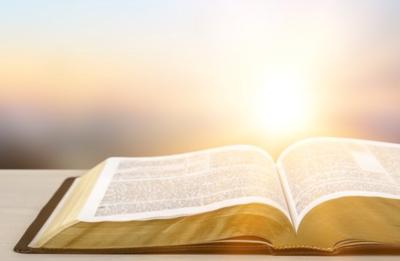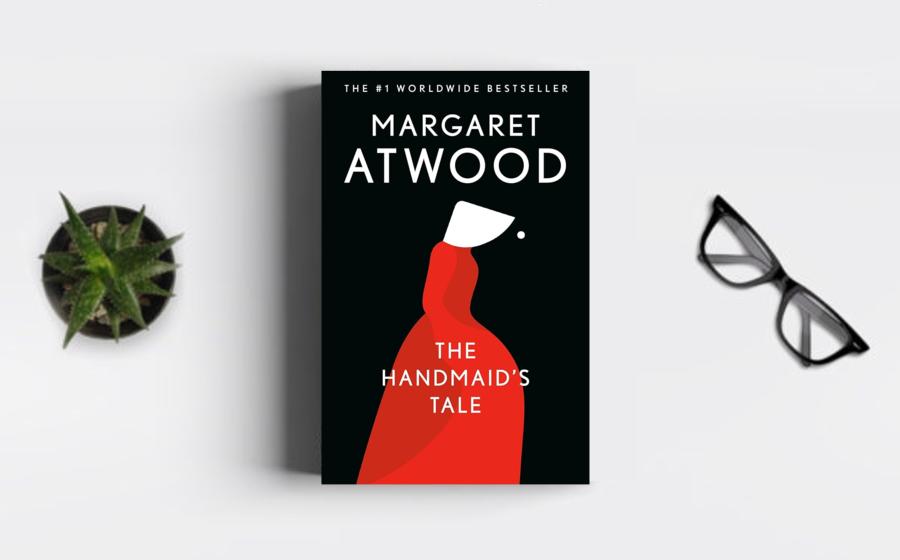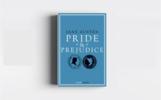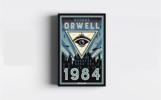"The Handmaid's Tale" stands as a literary tour de
force, a chilling exploration of a dystopian society
where women's bodies are controlled, autonomy is erased,
and oppression is institutionalized. Published in 1985,
Atwood's novel envisions the Republic of Gilead, a
theocratic regime that strips women of their rights and
reduces them to mere vessels for procreation. Through
the eyes of Offred, a Handmaid forced into reproductive
servitude, Atwood crafts a harrowing narrative that
transcends its fictional confines, offering a searing
critique of patriarchy, religious extremism, and the
fragility of human rights. "The Handmaid's Tale" is not
just a work of speculative fiction; it is a prophetic
warning, making it one of the top books of all time, a
stark reflection of societal vulnerabilities and a call
to vigilance.
Atwood's genius lies not just in her
creation of Gilead, but in the unsettling plausibility
of its emergence. "The Handmaid's Tale" is a dystopian
novel that reads like a cautionary tale, an eerily
prescient forecast of how societal shifts, fueled by
religious extremism and gender-based control, could
erode the rights of individuals, particularly women.
Gilead emerges as a society that exploits religion
to consolidate power, introducing a theocratic regime
that strips away the rights of women and imposes a rigid
hierarchy. Atwood's world-building is meticulous,
detailing the incremental steps that lead to the
establishment of a regime where women are classified
into strict roles, Handmaids for reproduction, Wives for
social status, and Marthas for domestic labor. The
gradual dismantling of civil liberties, the manipulation
of religious fervor, and the normalization of oppression
create a dystopian landscape that resonates with the
visceral fear of societal regression.
The
dystopian realism of Gilead serves as a stark reminder
that the erosion of rights can occur insidiously, under
the guise of moral rectitude. Atwood's portrayal of
Gilead is a call to vigilant awareness, urging readers
to recognize the fragility of societal structures and
the need to safeguard individual freedoms.
At the heart of "The Handmaid's Tale" is Offred's
first-person narrative, a poignant and intimate account
that immerses readers in the psychological and emotional
reality of life under the oppressive regime of Gilead. Offred's voice becomes a powerful instrument, allowing
Atwood to explore the nuances of resistance, survival,
and the indomitable spirit of the human will.
Offred's narrative is marked by a delicate balance
between compliance and subversion. As a Handmaid, her
survival depends on conforming to the prescribed roles,
yet beneath the surface of her compliance lies a
reservoir of resilience and resistance. Atwood captures
the intricate dance between survival instincts and the
yearning for autonomy, underscoring the internal
conflicts that define Offred's existence.
The use
of Offred's personal testimony adds a layer of
authenticity to the narrative, making the horrors of
Gilead tangible and immediate. Readers bear witness to
Offred's fears, desires, and the profound loss of
agency. Through her eyes, Atwood humanizes the
statistics of oppression, compelling readers to
empathize with the individual struggles within a
dystopian reality.
In Gilead, clothing becomes
a powerful tool of oppression and identity. The
Handmaids, clad in red robes and white bonnets, are not
just garments; they are symbols of the societal roles
imposed upon women. The red robes signify fertility and
the assigned purpose of reproduction, while the white
wings obscure the Handmaids' peripheral vision,
symbolizing their limited worldview and restricted
agency.
Atwood's use of clothing as a symbol is a
masterstroke, illustrating how the control of women's
bodies extends to the very fabric they wear. The red
attire becomes both a marker of subjugation and a visual
reminder of the state's intrusion into the most intimate
aspects of women's lives. The symbolism of clothing
amplifies the dehumanization of the Handmaids, reducing
them to their reproductive functions and erasing
individual identities.
The Handmaids' attire also
serves as a visual cue to the wider society, normalizing
the oppression of women and reinforcing the stratified
social structure. Atwood's attention to the symbolism of
clothing underscores the insidious ways in which
societal control infiltrates even the most personal
aspects of individuals' lives.
"The
Handmaid's Tale" is a searing indictment of religious
extremism and patriarchy, converging to create a
nightmarish dystopia where the subjugation of women is
institutionalized. Atwood's portrayal of the theocratic
regime in Gilead reflects a convergence of religious
fervor and patriarchal control, resulting in the erosion
of individual freedoms and the establishment of a
totalitarian state.
The society depicted in the
novel is a cautionary tale, emphasizing the dangers of
ideologies that weaponize religion to consolidate power.
Gilead's leaders manipulate religious doctrines to
justify their oppressive policies, highlighting the
potential for authoritarian regimes to exploit faith for
political gain. Atwood's narrative serves as a stark
reminder of the historical instances where religious
extremism has been used to curtail human rights,
particularly those of women.
Patriarchy,
intertwined with religious extremism, becomes a central
theme in Gilead. The systemic suppression of women's
voices, the reduction of their identity to defined
roles, and the denial of agency in matters of
reproduction underscore the patriarchal structures that
underpin the dystopian society. Atwood's critique
extends beyond the fictional confines of Gilead,
prompting readers to reflect on the real-world
manifestations of patriarchal control and the need to
challenge such systems.
Margaret
Atwood's novel occupies a significant place in the realm
of feminist literature, contributing to the exploration
of women's experiences, agency, and resistance. "The
Handmaid's Tale" engages with feminist discourse by
interrogating the intersections of gender, power, and
autonomy within a dystopian context.
The novel
invites readers to consider the consequences of a
society that enforces rigid gender roles, controls
reproductive rights, and silences dissenting voices.
Atwood's portrayal of the Handmaids' struggles becomes a
feminist allegory, amplifying the importance of
reproductive autonomy, bodily integrity, and the
relentless pursuit of agency in the face of systemic
oppression.
"The Handmaid's Tale" resonates with
the tenets of feminist literature by presenting a
nuanced examination of the impact of patriarchal
structures on women's lives. Through the lens of
dystopia, Atwood prompts readers to confront the
potential consequences of complacency and to champion
the ongoing fight for gender equality.
"The Handmaid's Tale" has transcended its status as
a novel to become a cultural touchstone, inspiring
adaptations across various media. The novel's themes,
imagery, and cautionary message have found resonance in
television, film, and theater, solidifying its place in
the collective cultural consciousness.
The
critically acclaimed television adaptation, especially,
has brought Gilead to life for a new generation of
viewers. The success of the adaptation underscores the
enduring relevance of Atwood's narrative, as viewers
grapple with the visual representation of a dystopian
society that eerily mirrors contemporary concerns about
the erosion of rights and the rise of authoritarian
ideologies.
The cultural impact of "The
Handmaid's Tale" extends beyond its entertainment value;
it serves as a catalyst for conversations about power,
agency, and the fragility of human rights. Atwood's
story has become a symbol of resistance, prompting
individuals to reflect on the societal conditions that
could lead to the erosion of freedoms and the importance
of safeguarding democratic principles.
"The Handmaid's Tale" transcends its genre to become an exploration of societal vulnerabilities, the dangers of religious extremism, and the nature of patriarchy. Atwood's dystopian masterpiece is not merely a work of fiction; it is a warning, a stark reminder of the fragility of human rights and the need for perpetual vigilance.






